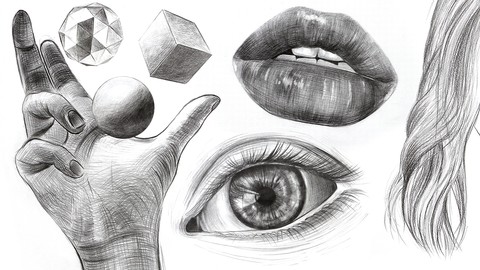From Lines to Life: A Comprehensive Guide to Advanced Sketching Techniques
Mastering realism in portrait drawing requires a structured approach that combines understanding of anatomy, observation skills, and mastery of drawing techniques. Here's a suggested plan to help you develop your skills in this area:
1. **Anatomy Study**:
- Start by studying the anatomy of the human face. Understand the proportions, skeletal structure, and muscles that contribute to facial expressions.
- Focus on key features such as the eyes, nose, mouth, ears, and hairline. Learn how these features are constructed and how they vary in different individuals.
2. **Observational Drawing**:
- Practice drawing from life as much as possible. Find models willing to sit for you, or use photographs for reference.
- Train your eye to observe subtle details such as light and shadow, contours, and textures. Pay attention to nuances in facial expressions and gestures.
3. **Value and Shading Techniques**:
- Mastering realism requires a strong understanding of light and shadow. Practice rendering different values using techniques such as hatching, cross-hatching, stippling, and blending.
- Experiment with different drawing tools such as graphite pencils, charcoal, and conte crayons to achieve different effects.
4. **Proportions and Measurements**:
- Learn techniques for accurately measuring proportions and distances in your drawings. Use techniques such as sighting, comparative measurement, and the use of plumb lines and sighting sticks.
- Pay close attention to the relationships between facial features and how they align with each other.
5. **Study of Light and Shadow**:
- Understand the principles of light and shadow, including the behavior of light sources, cast shadows, and reflected light.
- Experiment with different lighting setups to study how light interacts with the human face. Practice rendering form and volume through careful observation of light and shadow patterns.
6. **Texture and Detail**:
- Develop techniques for capturing texture and detail in your drawings. Experiment with different mark-making techniques to represent skin texture, hair, clothing, and other details.
- Pay attention to the direction of lines and strokes to convey the texture and three-dimensional form of different surfaces.
7. **Continuous Practice and Feedback**:
- Improvement in portrait drawing comes with consistent practice and a willingness to learn from your mistakes.
- Seek feedback from other artists, instructors, or online communities to identify areas for improvement and gain new perspectives on your work.
8. **Study of Master Artists**:
- Study the works of master artists known for their skill in portrait drawing, such as Leonardo da Vinci, Rembrandt, John Singer Sargent, and contemporary realists.
- Analyze their techniques, compositions, and use of light and shadow to gain insights into how they achieved realism in their portraits.
Remember that mastering realism in portrait drawing is a journey that takes time and dedication. Be patient with yourself, and enjoy the process of learning and improving your skills.

Post a Comment for "Mastering Realism: A Structured Approach to Portrait Drawing"